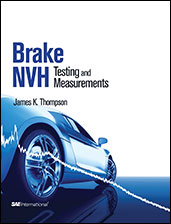Technical Paper
An Investigation of the Noise Performance of an Alternative Windshield Interlayer Material
2008-03-30
2008-36-0521
An investigation of the effects of changes to the interlayer material in a windshield is described. While the program covered a broad range of measurements to assess the performance different interlayer materials, this paper will focus on the development of a raindrop test that could accurately simulate noise performance in a rainstorm. For the purpose of this test a unique device was developed to simulate rainfall. This test apparatus is described. When using this device, the resulting interior noise was found to be quite similar to that experienced in the natural environment. The difference between interlayers was found to be significant using this rain drop tester. Both objective and subjective measures showed differences that were in some cases easily detectable by the average listener.

